salvador, brazil
A heady cultural mix
An ancient colonial city, once the first capital of Brazil, Salvador has always been the cradle of the Afro-Brazilian culture. Distinguished by a manifest cultural and religious syncretism, its streets exude mystic sacredness. Rough and real, Salvador slaps the beauty and the ugliness into you at every corner and, among the chaos, the dirt, and the undeniable charm, it inevitably bewitches. You'll feel your limbs shaking to the beat of samba and Olodum, your head spinning around to the movements of capoeira, and, with the taste of acarajé in your mouth, you'll witness Salvador penetrating all your senses.
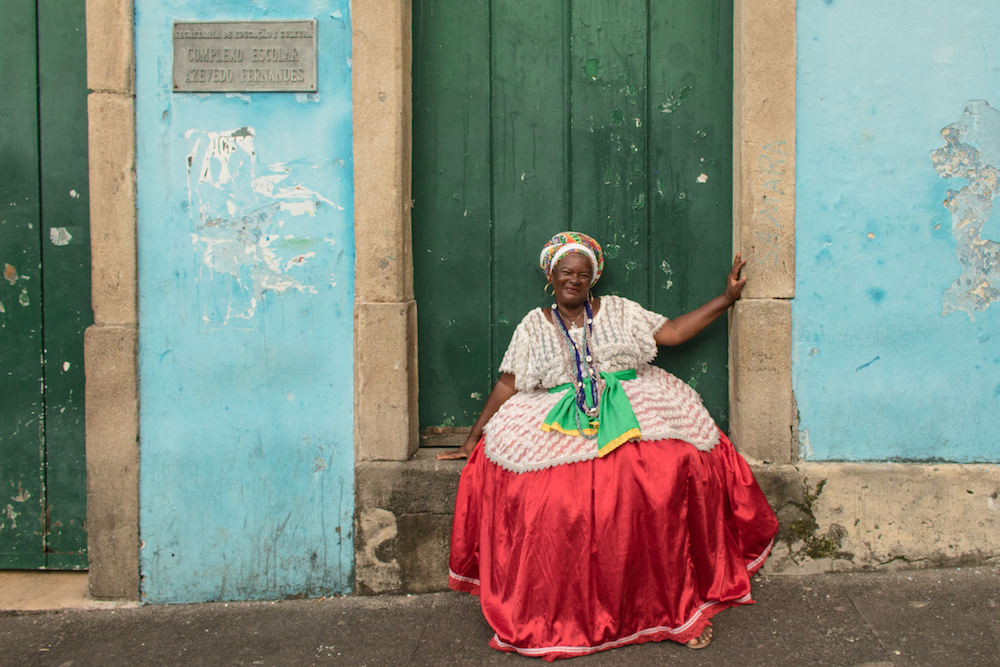
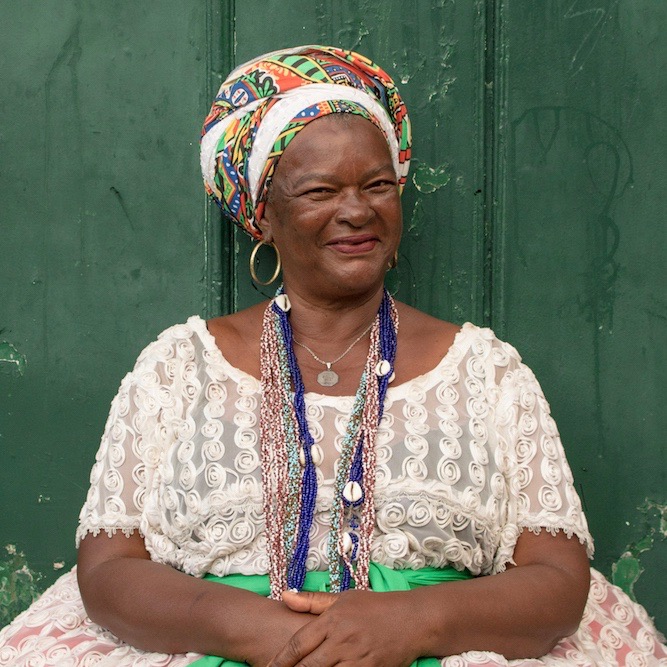
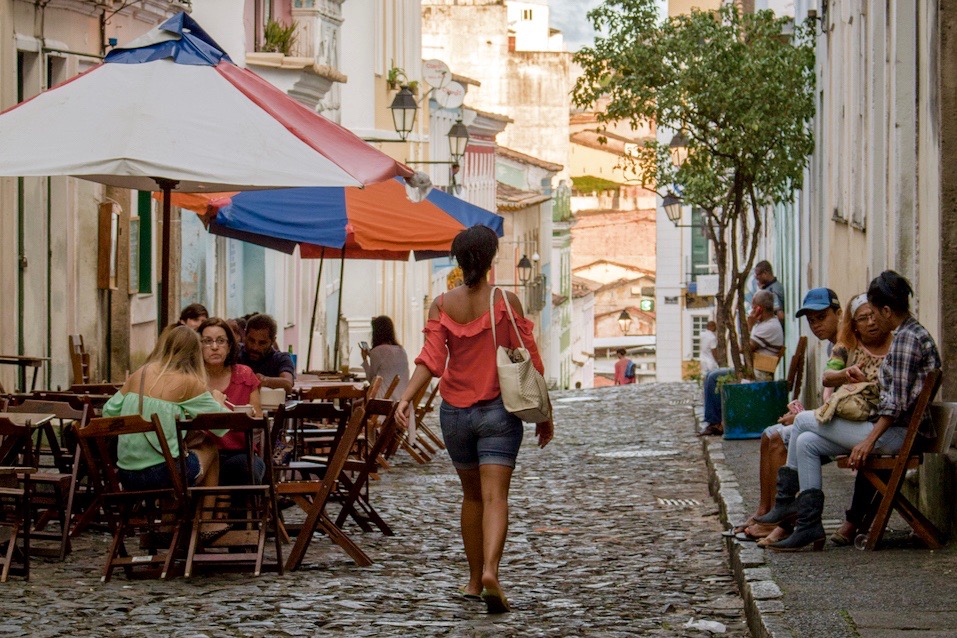
what to eat
Yet another example of the fascinating cultural mix that distinguishes Bahia, the cuisine too is deeply affected by African influences, whose result is strongly flavored food characterized by the use of palm oil, coconut milk, ginger, and pepper. The list of typical dishes is long but no one should leave Salvador without trying at least two of them: acarajé and moqueca. Sold in the streets by traditionally dressed women, acarajé is a compound of black-eyed peas shaped into balls and fried in palm oil, then split and filled with a peanuts and prawns paste, shrimps, hot chili sauce, and tomatoes. The moqueca instead consists of fish or prawns stewed with coconut milk, palm oil, hot chili, garlic, onions, parsley, and tomato paste and then served with white rice.
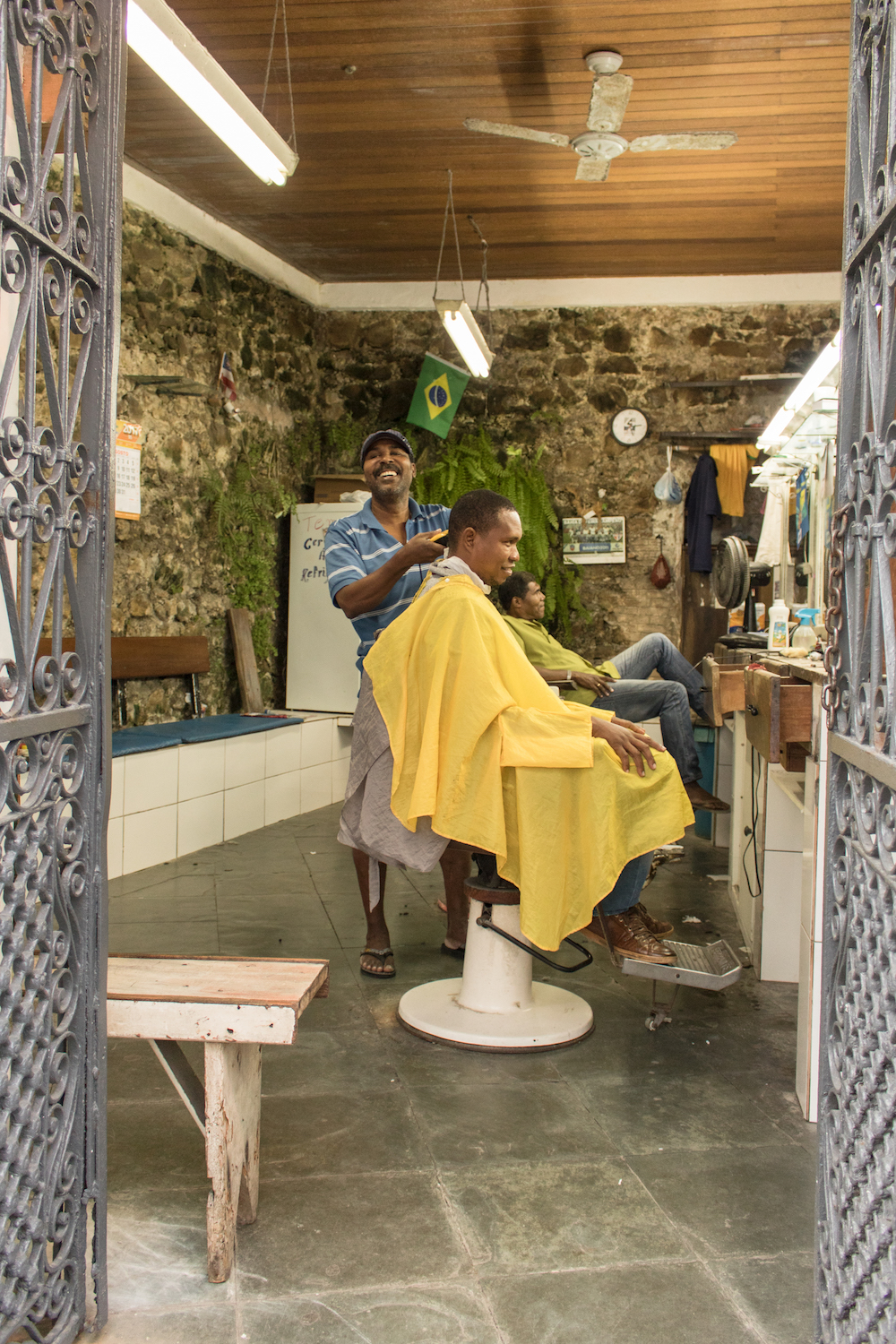
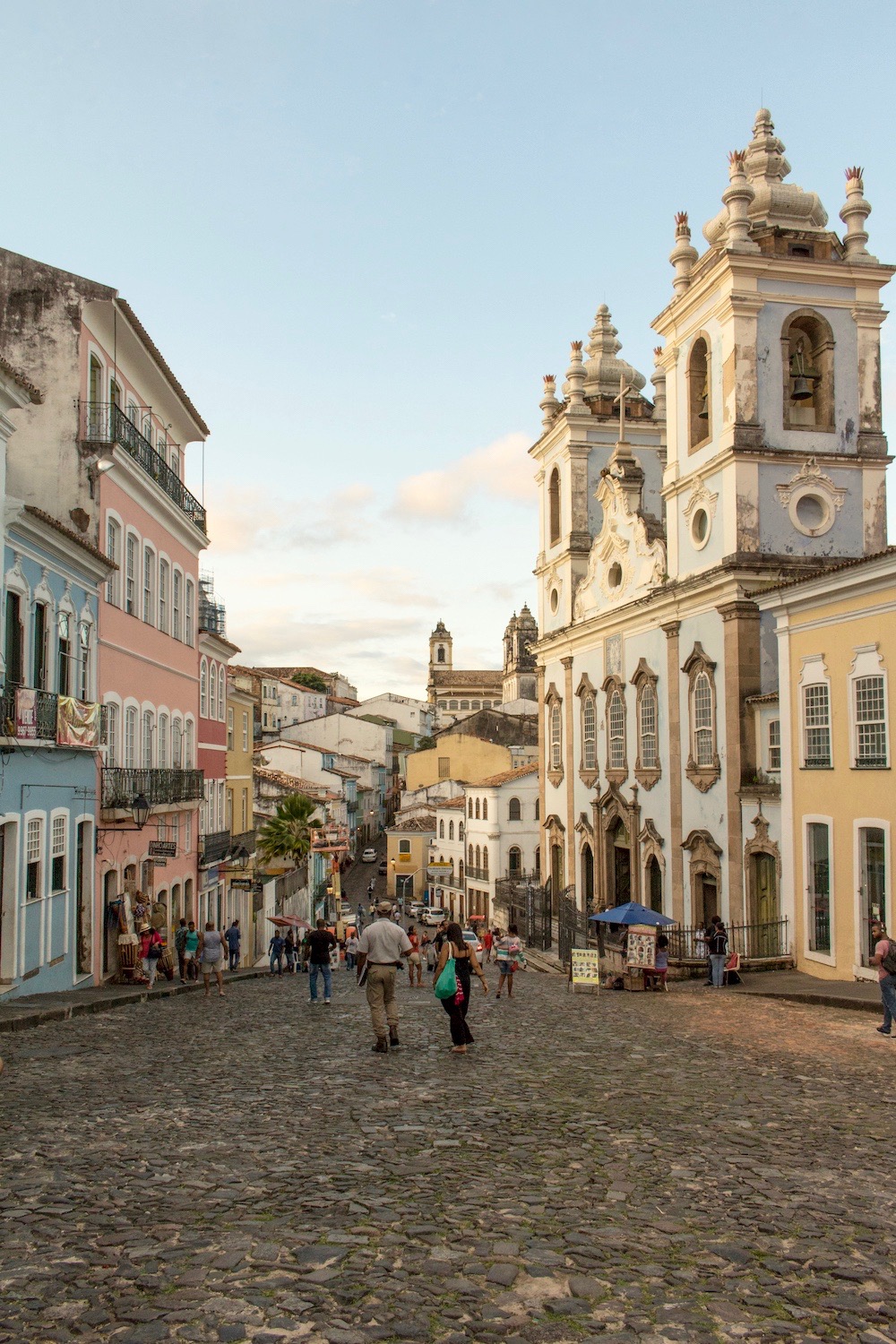
what to see
Founded in 1549 by the first Portuguese settlers in Brazil, Salvador quickly grew wealthy thanks to the flourishing trade: cocoa, tobacco, and sugarcane left in great quantity towards Europe, while more than a million slaves arrived at its port from Africa. The heritage of the brutal colonial era is evident in the elegance of its buildings and the imposingness of its Baroque churches, but also in the fascinating mix of races and cultures. The most thrilling examples of both can be found in the historic quarter of Pelourinho that sadly owes its name to the pillory pole where slaves were publicly flogged. Now the colorful Pelourinho is dotted with shops, bars, restaurants, and museums frequented by tourists and locals alike, and wandering through its streets you're likely to bump into a capoeira performance or an Olodum rehearsal. Not to be overlooked here is certainly the Church and Convent of São Francisco with its lavish gold-plated interiors, and the Elevador Lacerda, an art deco elevator connecting Pelourinho with the lower part of town, offering magnificent views over the Bay of All Saints. In close proximity visit also Mercado Modelo to find handcrafted souvenirs, while for a more authentic experience head to São Joaquim Market. Finally, don't miss the Saturday sunset jazz and bossa nova concerts at Solar do Unhão, a stroll along Barra's promenade and a visit to Bonfim Church.
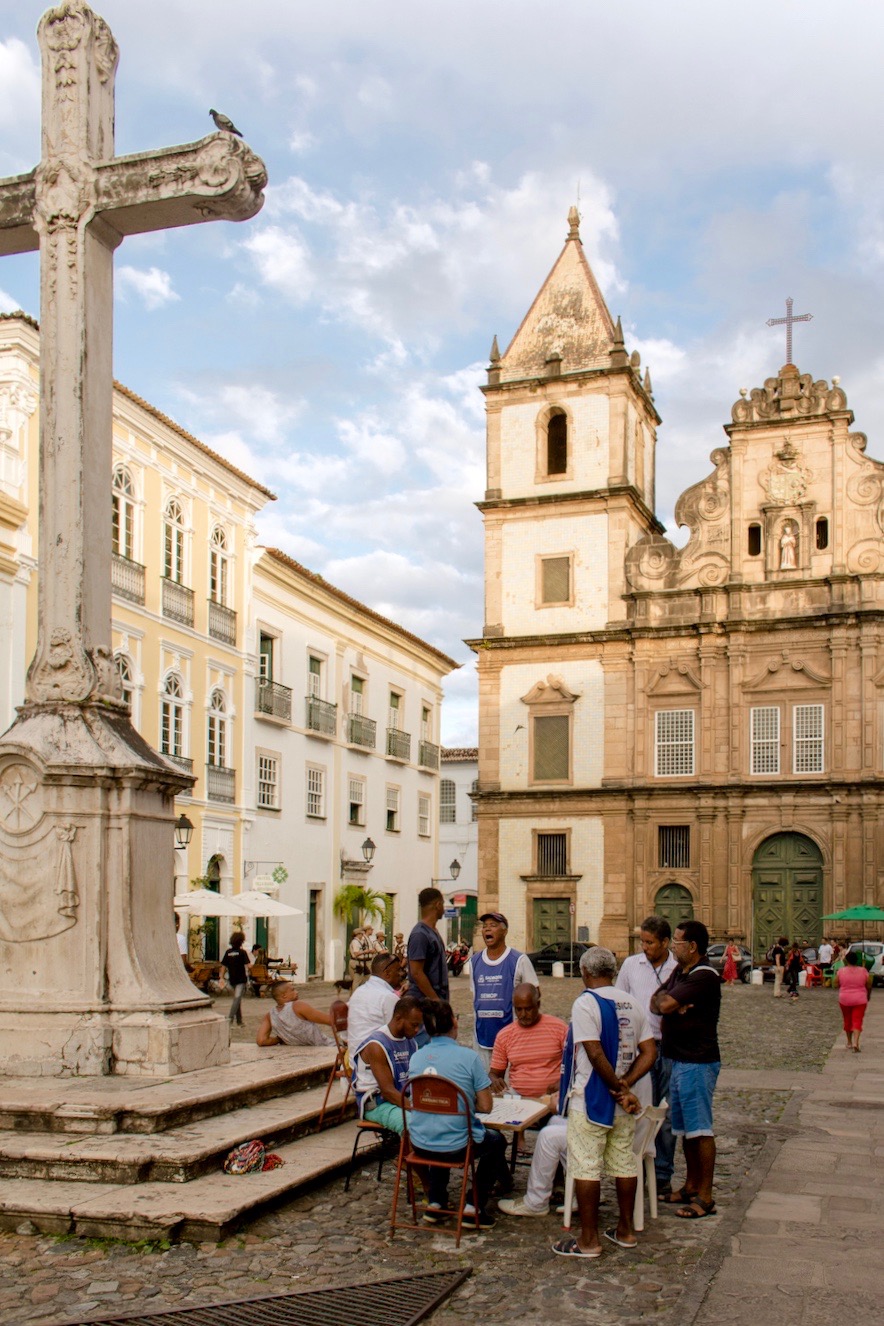
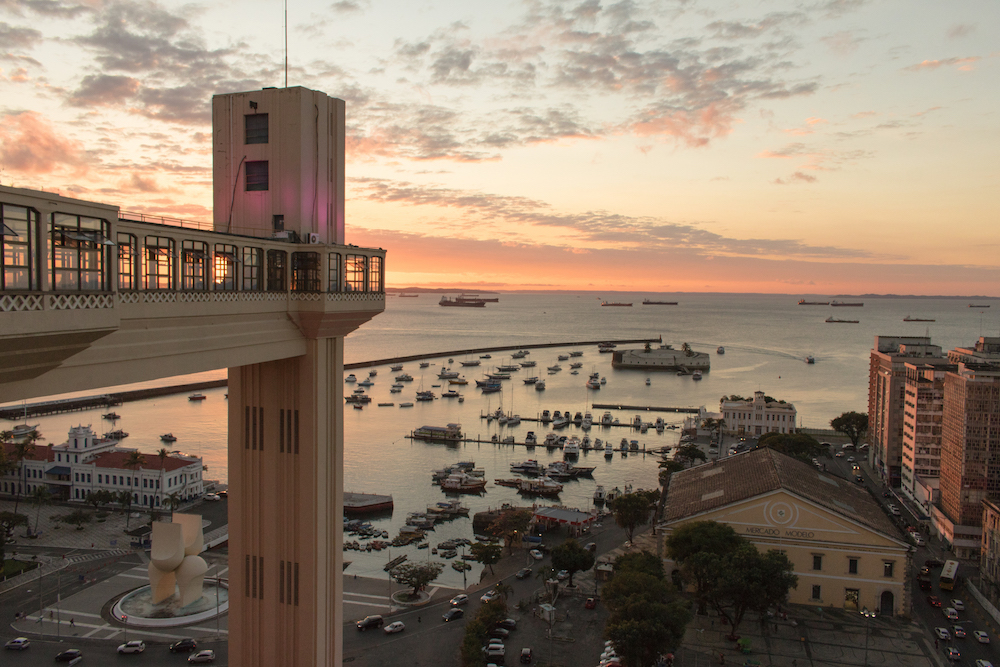
An ancient colonial city, once the first capital of Brazil, Salvador has always been the cradle of the Afro-Brazilian culture. Distinguished by a manifest cultural and religious syncretism, its streets exude mystic sacredness. Rough and real, Salvador slaps the beauty and the ugliness into you at every corner and, among the chaos, the dirt, and the undeniable charm, it inevitably bewitches. You'll feel your limbs shaking to the beat of samba and Olodum, your head spinning around to the movements of capoeira, and, with the taste of acarajé in your mouth, you'll witness Salvador penetrating all your senses.

what to see
Founded in 1549 by the first Portuguese settlers in Brazil, Salvador quickly grew wealthy thanks to the flourishing trade: cocoa, tobacco, and sugarcane left in great quantity towards Europe, while more than a million slaves arrived at its port from Africa. The heritage of the brutal colonial era is evident in the elegance of its buildings and the imposingness of its Baroque churches, but also in the fascinating mix of races and cultures. The most thrilling examples of both can be found in the historic quarter of Pelourinho that sadly owes its name to the pillory pole where slaves were publicly flogged. Now the colorful Pelourinho is dotted with shops, bars, restaurants, and museums frequented by tourists and locals alike, and wandering through its streets you're likely to bump into a capoeira performance or an Olodum rehearsal. Not to be overlooked here is certainly the Church and Convent of São Francisco with its lavish gold-plated interiors, and the Elevador Lacerda, an art deco elevator connecting Pelourinho with the lower part of town, offering magnificent views over the Bay of All Saints. In close proximity visit also Mercado Modelo to find handcrafted souvenirs, while for a more authentic experience head to São Joaquim Market. Finally, don't miss the Saturday sunset jazz and bossa nova concerts at Solar do Unhão, a stroll along Barra's promenade and a visit to Bonfim Church.


what to eat
Yet another example of the fascinating cultural mix that distinguishes Bahia, the cuisine too is deeply affected by African influences, whose result is strongly flavored food characterized by the use of palm oil, coconut milk, ginger, and pepper. The list of typical dishes is long but no one should leave Salvador without trying at least two of them: acarajé and moqueca. Sold in the streets by traditionally dressed women, acarajé is a compound of black-eyed peas shaped into balls and fried in palm oil, then split and filled with a peanuts and prawns paste, shrimps, hot chili sauce, and tomatoes. The moqueca instead consists of fish or prawns stewed with coconut milk, palm oil, hot chili, garlic, onions, parsley, and tomato paste and then served with white rice.

